"Rat trails" led to the New World
Many countries in Latin America in the twentieth century evolved according to the standard model - military coups brought regular junta generals and colonels to power, most often pro-American and / or ultra-right orientation. The bulk of the population was in poverty, economically the countries depended heavily on the United States of America, to a lesser extent - from Great Britain and other European states, but the oligarchy and the latifundists were rapidly getting rich and defended their interests, including relying on corrupt power structures. As early as the Second World War, some Latin American military regimes almost openly sympathized with Hitler’s Germany and fascist Italy as the “vanguard of the world struggle against communism,” and after the defeat of the Axis countries, they willingly provided political asylum to the former soldiers of the Hitlerite army, SS troops, police officers and special services, as well as listed categories from countries that fought on the side of Nazi Germany. Among the "spare airfields" of the Nazi war criminals, Paraguay has always occupied a special place.
Paradise for the Nazis by General Stroessner
Paraguay is a landlocked and economically weak state in South America, one of the most impoverished countries in the continent, with a dysfunctional historyfull of military coups. The main part of the Paraguayan population are the Indians - Guarani, but the power in the country since the liberation from the Spanish colonialists belongs to the few elites of European descent. Since the end of the XIX century. In Paraguay, a significant number of German-speaking immigrants from Europe lived - Austrians, Bavarians, Saxons, Prussians, who gradually occupied important positions in the political and economic spheres of the life of the Paraguayan society. After World War I, the number of German-speaking people in Paraguay increased. On the border with Argentina, a whole colony of Germans was established under the leadership of Adolf Schwelm. Schwelm's colonists played a significant role in the economic and then political life of Paraguay. Many ethnic Germans and their children, born in Paraguay, entered military service in the Paraguayan army, since many people from Central Europe had a passion for military affairs and discipline in their blood.
Alfredo Stroessner (1912-2006), the future dictator of Paraguay, who actually turned the country into an Eldorado for Nazi war criminals, was of German origin.
Alfredo Stroessner was the son of a German émigré, a native of Bavaria, Hugo Stroessner, who worked as a bookkeeper at a brewery. The mother of the future dictator of Paraguay Heribert Matiauda was descended from a Creole rich family name, so Alfredo belonged to both the Paraguayan elite and the German nation because of its origin. At sixteen, Stroessner linked his fate with a military career by enrolling in a military school. He took part in the Chaka war (the Paraguay-Bolivian war) and in six years, from 1940 to 1948, he went from a major to a brigadier general. By the way, Stressner put the general epaulets on only in 36 years, which made him the youngest general in all of Latin America for the period in question. In 1954, Stroessner, who was already a divisional general, was appointed commander-in-chief of the Paraguayan army, and on May 5, 1954 made a military coup. In August, 1954 held a presidential election, according to which Stroessner became the legitimate head of the Paraguayan state. By the way, the United States almost immediately after Stressner came to power granted the country a multi-million dollar loan - the general was considered a pro-American leader because of his anti-communist convictions. Due to ethnicity and ultra-right views, Alfredo Stroessner has always had great sympathy for Hitler's Germany. Being a German by birth, he was convinced that German colonists played a very positive role in the life of the Paraguayan state and could become its new elite - political, military and economic. Therefore, Stroessner strongly stimulated the existing German colonies, and also encouraged the emigration of Germans from Europe to Paraguay. Among the latter there were many who, by their political convictions and, especially because of the military past in the ranks of the Wehrmacht or the SS, did not fit into the post-war world of Western Europe. Stroessner did not object to the arrival of former Nazi war criminals in Paraguay, who found refuge in numerous German colonies in the east of the country.
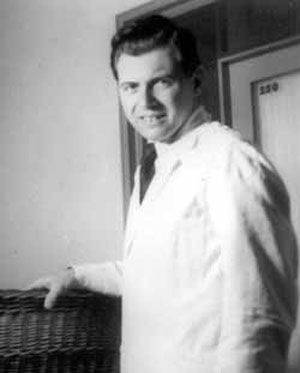 During the reign of Alfredo Stroessner, a large number of Nazis and Fascists from Germany, Italy, Croatia and other European countries settled in Paraguay. Perhaps the most famous Nazi criminal who lived for some time in Paraguay was the sinister Dr. Josef Mengele, known in Latin America as Jose Mengele. 27 November 1959 Alfredo Stroessner granted Paraguayan citizenship to Josef Mengele, a former medical service captain and doctor at the Auschwitz concentration camp. However, in Paraguay Mengele did not linger, but moved to Brazil, where he died of a stroke while swimming in the sea in 1979 year. For a long time, a version of the flight to Paraguay and one of the most important “bosses” of the Third Reich - Martin Borman was distributed in the media. Recall that Martin Borman disappeared without a trace in the days of the assault on Berlin, and his body was never found. This gave grounds for many historians and journalists to accept the version of Borman’s possible flight to Latin America. Paraguay was called the likely refuge of the Nazi leader. Some journalists claimed that they had to face Martin Borman in Paraguay. It was reported that he died in 1957 from stomach cancer in one of the Paraguayan cities. However, in 1973, in Berlin, workers found human remains, which allegedly belonged to Martin Borman, who died in 2 in May, 1945. Only in 1998, using DNA analysis, it was possible to establish that the remains really belonged to the head of the party office and the nearest ally of Adolf Hitler. Thus, the version of Paraguayan emigration by Martin Bormann was finally rejected as untenable.
During the reign of Alfredo Stroessner, a large number of Nazis and Fascists from Germany, Italy, Croatia and other European countries settled in Paraguay. Perhaps the most famous Nazi criminal who lived for some time in Paraguay was the sinister Dr. Josef Mengele, known in Latin America as Jose Mengele. 27 November 1959 Alfredo Stroessner granted Paraguayan citizenship to Josef Mengele, a former medical service captain and doctor at the Auschwitz concentration camp. However, in Paraguay Mengele did not linger, but moved to Brazil, where he died of a stroke while swimming in the sea in 1979 year. For a long time, a version of the flight to Paraguay and one of the most important “bosses” of the Third Reich - Martin Borman was distributed in the media. Recall that Martin Borman disappeared without a trace in the days of the assault on Berlin, and his body was never found. This gave grounds for many historians and journalists to accept the version of Borman’s possible flight to Latin America. Paraguay was called the likely refuge of the Nazi leader. Some journalists claimed that they had to face Martin Borman in Paraguay. It was reported that he died in 1957 from stomach cancer in one of the Paraguayan cities. However, in 1973, in Berlin, workers found human remains, which allegedly belonged to Martin Borman, who died in 2 in May, 1945. Only in 1998, using DNA analysis, it was possible to establish that the remains really belonged to the head of the party office and the nearest ally of Adolf Hitler. Thus, the version of Paraguayan emigration by Martin Bormann was finally rejected as untenable. Junta Perona was famous for the hospitality of the Nazis.
Argentina has also become a safe haven for Nazi war criminals. As in Paraguay, a large German colony existed here before the war. Up to half a million ethnic Germans lived in the country — and that is, with a total population for the period in question, 13 million. In the German environment of Argentina operated the Association of German charity and cultural societies, which was actually a branch of the NSDAP in Latin America. There were German sports clubs, which were based on the NSDAP’s “assault squads” model. At a higher level, there was a development of economic ties between Germany and Italy on the one hand, and Argentina on the other. There were numerous branches of German companies in the country. Argentina supplied chemicals, metals, meat and wheat to Germany and Italy. Only 27 March 1945, under pressure from the United States and Great Britain, Argentina declared war on Hitler Germany, until then the country remained neutral with obvious sympathy for the Hitler regime. That is, for arranging the Nazi criminals in Argentina, there was quite a favorable climate.
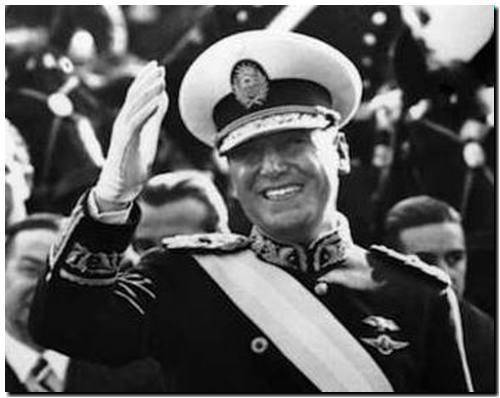
[In 1946, Colonel Juan Domingo Peron (1895-1974) came to power in the country - a professional military man who served as military attache in Chile and Spain, and after the coup 1943, he served as head of the labor department and then minister of labor in the military government Of Argentina. Peron went down in history as a nationalist and populist-minded politician who sympathized with right-wing ideologies and condescendingly treated Nazi war criminals who had fled Europe. According to Peron, the presence of the Nazis - generals and officers of the Wehrmacht, the SS, police and special services - in Argentina would largely play to the benefit of the country, since it allowed to use the experience and potential of Hitler, Mussolini, Vichy, Ustash and other military personnel and officials in interests of the Argentine state. The high-ranking hierarchs of the Catholic Church played a mediating role in transporting Nazi war criminals from Europe to Argentina (as well as to other countries in Latin America). In fact, the Vatican acted as a “passport service” for the Nazi criminals, supplying the Nazi officers with passports or organizing them unimpeded departure from Europe to Latin America.
Undoubtedly, the most famous Nazi hiding in Argentina was Adolf Eichmann (1906-1962) - the SS obersturmbanführer, who led the special department of the Gestapo IV-B-4, responsible for the "final solution of the Jewish question." The monks from the famous order of the Franciscans provided direct assistance to the flight of Europe from Latin America to this Hitler ally.
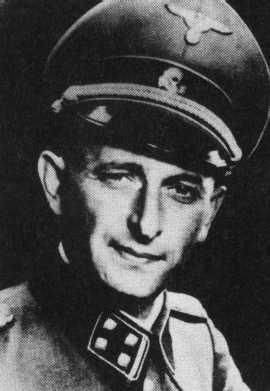 With the help of the Catholic clergy, Eichmann was able to issue a passport of an Argentine citizen in the name of Richard Clement. After that, he legalized in Argentina, where he spent ten years - from 1950 to 1960. During this time, Eichmann even managed to take his family out of Germany, arriving in Germany with a new Argentinian passport and re-marrying his spouse as another person, with the aim of further joint travel to Argentina. The measured life of a Nazi in Buenos Aires was interrupted by Israeli intelligence officers "Mossad", who managed to track down the Nazis and kidnap him right from the Argentine capital. Adolf Eichmann, brought to Israel, was convicted and sentenced to death by hanging for numerous crimes against humanity, committed when he was the head of the Gestapo department responsible for "solving the Jewish question."
With the help of the Catholic clergy, Eichmann was able to issue a passport of an Argentine citizen in the name of Richard Clement. After that, he legalized in Argentina, where he spent ten years - from 1950 to 1960. During this time, Eichmann even managed to take his family out of Germany, arriving in Germany with a new Argentinian passport and re-marrying his spouse as another person, with the aim of further joint travel to Argentina. The measured life of a Nazi in Buenos Aires was interrupted by Israeli intelligence officers "Mossad", who managed to track down the Nazis and kidnap him right from the Argentine capital. Adolf Eichmann, brought to Israel, was convicted and sentenced to death by hanging for numerous crimes against humanity, committed when he was the head of the Gestapo department responsible for "solving the Jewish question." Half a century, he lived safely in Argentina Erich Pribke - Hauptsturmführer SS, responsible for the murder of communists and Jews in Italy in 1944. During the massacre in the Ardeatin caves, at the hands of the Nazis, 335 Italians died. So the Nazis took revenge for the attack of the Italian partisans on the 11-th company of the 3-th battalion of the police regiment of the SS "Bozen", during which the German police and 33 were injured by the partisans and wounded by various degrees of severity. Erich Pribke directly supervised the massacre of civilians Italians. However, after the end of World War II, he managed to escape from a British prisoner of war camp. Prybke got to Argentina, where he found refuge. It is noteworthy that in Argentina he lived under his present name and did not particularly hide his past. In the German community, he took over as chairman of the board of trustees of the German Bariloche School. Only in 67-s. journalists have become interested in Pribke. Argentine authorities arrested Prybke, but given his old age, they kept the Nazi war criminal under house arrest. True, in 1990, it was decided to extradite him to Italy. However, even after his arrest, Prybke was able to live another eight years. In 1995, Pribka died in the one hundred and first year of life. As we see, he lived for a very long time, almost the maximum that was released to a person, without actually answering for his atrocities during the Second World War. Argentina became his refuge for many years.
For a long time, Edward Roshman, the commander of the notorious Riga ghetto and the Riga-Kaiserwald concentration camp, also lived in Argentina. After the release of the film, based on the novel by Frederick Forsythe, Roshman got the nickname “Riga butcher”. In 1945-1947 Roshman was in an Allied prisoner of war camp, but was then released. In 1947, he was again arrested by the British military police in Graz, but Roshman managed to escape. With the help of the Red Cross, Roshman received documents addressed to Federico Wegener and fled to Argentina. There he went into business, traded in timber, and then in Argentine became a citizen of 1968. Nevertheless, the search for Roshman in Europe continued and in 1977, the Argentine authorities were forced to issue a warrant for the arrest of Roshman. Then he fled to Paraguay, where he died the same year.
In addition to the German war criminals, Hitler’s colleagues from other European countries were hiding in Argentina. So, for some time Ante Pavelic, the leader of the Croatian Ustashes, lived in the country. He even took the post of security adviser under Juan and Evita Peron. 10 April 1957 Yugoslav emigrants - Serbian Chetniks Blagoe Jovovich and Milo Krivokapic managed to hunt down Ante Pavelic at his house and open fire. Pavelic received two wounds in his hand, after which he was forced to leave Argentina and move to Spain.
According to modern researchers, up to 5 thousands of Nazi war criminals have found shelter in Argentina. A great role in inviting Nazis into the country was played by Eva Peron - the wife of the Argentine dictator. According to Leandro Narloh and Duda Teksteira, Evita Peron immediately after the end of the Second World War took up the issue of settling the Nazi war criminals in Argentina. In exchange for Argentine passports, Evita received large sums of money and valuables, which she deposited into an account in a Swiss bank. But, again, we repeat, this is only a version of modern historians. Although it is impossible not to allow the likelihood and such behavior of the Argentine "first lady". At the very least, the Nazis did indeed have the opportunity to live freely in Argentina. Many of them have done good business in this country, headed their own companies, and some continued to work as military and police specialists in Argentine security forces. Only after the democratization of political life in the country, Argentina ceased to be a safe haven for Nazi war criminals, but until now the children and grandchildren of those who burned Jews in the Auschwitz furnaces lived here, shot communist partisans in Italy and Yugoslavia, and terrorized the peaceful population of the Soviet Union. Many of them feel fine, being successful businessmen - heirs of capital, made by fathers and grandfathers, including at the expense of funds stolen during the war.
Chilean retreat of Hitler's comrades
Another Latin American state, happy to meet the Nazis - immigrants from Europe, was Chile. In 1946, Gabriel González Videla became president of Chile. In an effort to enlist the support of the United States, this Chilean politician, who initially created the appearance of democratic government, went to the withdrawal of the Communists from the government of the country and the ban on the Communist Party of Chile and pro-communist trade unions. In 1947, Chile broke off diplomatic relations with the USSR. Thus, in this Latin American state, favorable conditions for the admission of Nazi war criminals were established on the basis of the state ideology of anti-communism. Moreover, Chile also had an impressively large and politically and economically influential German diaspora in the pre-war years. Spanish poet and writer Rafael Alberti recalled that “At that time, at the time of Hitler's victorious victories, I happened to cross the street under a real forest of banners decorated with a swastika in some village or town in southern Chile. Once in a small southern village I had to use the only phone available there, and I was forced to involuntarily pay homage to the Führer. The owner of this pay phone, a German, contrived to hang the device so that the person who used it had to stand, stretching out his hand up, under the portrait of Hitler, in which he was also depicted with his hand thrown upwards (Alberti R. I confess I lived . Memories).
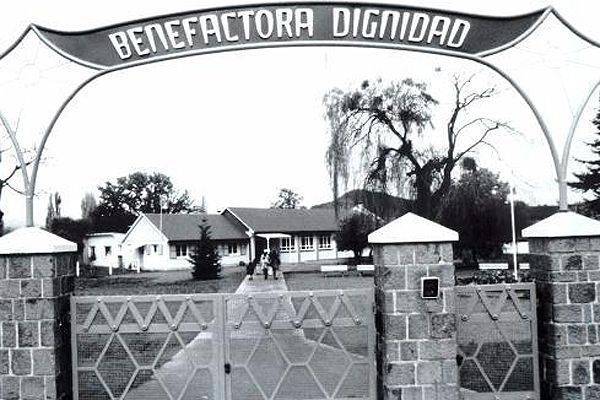
In 1961, the German colony “Digidad” was officially established on the territory of Chile, occupying an area of 10 thousand square kilometers adjacent to the Argentinean border. Formally, the colony was created to care for orphans, whose parents died during the earthquake in Valdivia. Along the way, the colonists were going to educate local peasants about advanced farming practices adopted in Europe. However, charitable activity became only a cover for commercial activity, which brought many millions of dollars to the founders of the colony. Since the Chilean government did not tax the colony, Digidad quickly became a prosperous agricultural company. Produced in the colony products were exported to Germany, where they were in great demand. At the source of the colony was someone Paul Schaefer - a native of the city of Siegburg with a muddy biography of a typical adventurer. Schöfer, who grew up without a father, started on the street as an assistant strolling circus artist. As part of the sanitary battalion, he fought on the Eastern Front, where he lost his left eye. After the war, Schaefer worked in a kindergarten at the Evangelical Church, but was driven out of pedophilia in disgrace. Together with like-minded evangelists, he created a religious community near Siegburg, which hosted people affected by the war — widows, orphans, and refugees from East Germany. However, soon the scandal about the corruption of minors in the colony of Schaefer broke out again. The pedophile sectarian decided to emigrate to Latin America, especially since 1961 was followed by an invitation from Arturo Mashke, the ambassador of Chile to the Federal Republic of Germany. Thus, the German religious and commercial colony “Digidad” appeared under the leadership of a man with a strange biography and even more strange inclinations. The Schaefer colony was of great help to Chilean right-wing organizations. Nazi war criminals who escaped from Europe found shelter in it, although many of the publications about “Digidad” are almost like the underground center of Nazism in Latin America as an exaggeration. During the years of Pinochet's rule, the Digidad colony became one of the pillars of the regime, since Schaefer and his associates actively collaborated with the Pinochet's secret police. Only in 1991, the activity of the colony in Chile was discontinued due to repeated and gross violations of Chilean law by colonists.
Forty years after the end of the Second World War, lived Walter Rauff (1906-1984), who died at the age of seventy-seven in the Chilean capital of Santiago. Recall that Walter Rauff was the author of the idea of the “gas chambers” - the famous car “gazwagen”. In such cars - gas chambers Nazi criminals killed tens of thousands of civilians. A former naval officer, Rauff, in 1941, moved from the post of commander of the corvette to the imperial security service of the RSHA, where he led the development of gazwagen.
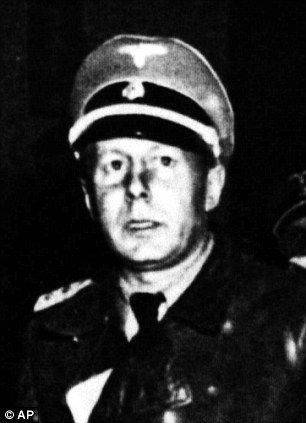 After the war, he was arrested by American forces, placed in a prisoner of war camp in Rimini, but in December 1946 fled. The first time he lived in Syria, where he continued to work in his specialty - in Syrian counterintelligence, but then he fled to Latin America - first to Ecuador, and then to Chile. In 1962, the Chilean police arrested Rauff at the request of the German side, but the court refused to extradite the former SS man to Germany. The Pinochet regime, moreover, refused to extradite Rauff, and Beat Klarsfeld, who came to Chile in search of him - “the Nazi huntress” - was even arrested by the Pinochet police.
After the war, he was arrested by American forces, placed in a prisoner of war camp in Rimini, but in December 1946 fled. The first time he lived in Syria, where he continued to work in his specialty - in Syrian counterintelligence, but then he fled to Latin America - first to Ecuador, and then to Chile. In 1962, the Chilean police arrested Rauff at the request of the German side, but the court refused to extradite the former SS man to Germany. The Pinochet regime, moreover, refused to extradite Rauff, and Beat Klarsfeld, who came to Chile in search of him - “the Nazi huntress” - was even arrested by the Pinochet police. Brazil also hosted the Nazis
Some Nazi war criminals have found shelter in Brazil. Unlike the rest of South America, Brazil took a real part in the Second World War. Moreover, the war of Hitler Germany was declared by Brazil not in 1944-1945, but in August 1942. The 25-thousandth expeditionary force of the Brazilian army fought in Italy as a part of the Allied forces. And yet Brazil has also become a haven for many Nazi war criminals. This was explained, again, by the presence in the country of a large German diaspora, which had strong positions in the political and economic life of Brazil, as well as right-wing sentiments of a significant part of Brazilian senior and senior officers of the army, police and special services. The so-called ideology enjoyed great influence in the country. "Brazilian Integralism", which had much in common with Italian fascism. At the root of integralism was the writer Pliniu Salgadu, who created the integratist movement in 1932. The flag of the integralists was a blue cloth with a white circle in the middle and a Greek letter Σ in the center. However, taking into account the specifics of the racial and national composition of the Brazilian population, the integrationist movement abandoned the racism inherent in Hitler’s Nazism and made it accessible to representatives of all races of Brazil, including the Negroids. Integrals with sympathy and sympathy belonged to the Italian fascists and even to the German Nazis, so there is nothing surprising in the fact that after the defeat in World War II, many Nazi criminals rushed to Brazil - activists of the integrationist movement were always ready to help European like-minded people.
In October, 1947, the government of General Eurico Gaspar Dutra, announced the termination of diplomatic relations with the Soviet Union. Thus, Brazil openly sided with the United States in the Cold War, moreover, it went further than its senior partner, breaking off diplomatic relations with the Soviet Union and proceeding with repressions against the communists inside the country. On the basis of the assertion of anti-communist ideology, the country began to provide shelter to Nazi war criminals. Many of them came to Brazil through the Catholic Church, which mediated between the Nazis and the Latin American states on the granting of citizenship. In Brazil, the former Hauptsturmführer SS Franz Stangl, the commandant of the concentration camps Sobibor and Treblinka, lived until the arrest and extradition to the authorities of the Federal Republic of Germany. Only in 1978 in São Paulo, Gustav Franz Wagner (1911-1980) was arrested, serving as deputy head of the SS Sobibor in the rank of SS obersharführer. It was Wagner who was directly responsible for the 200 killings of thousands of civilians in Sobibor. The Nuremberg Tribunal sentenced Wagner to death, but he managed to escape and emigrate to Latin America. In Brazil, he lived under a false name. Even after the arrest, the Brazilian authorities refused to extradite Wagner to the authorities of Israel, the GDR, Poland and Austria. However, the former Nazi executioner died under strange circumstances - his body was found with a knife in his chest. According to the official version, the death of Wagner was caused by suicide.
“Rat move” to the United States
Despite the fact that the United States itself took part in the Second World War as one of the leaders of the anti-Hitler coalition, the path of many Nazi war criminals after the end of the war lay in the United States. Of course, the United States could not openly host odious characters such as the commandants of the concentration camps, so the latter found refuge in Latin American countries. But in the United States, a large number of collaborators and traitors from European countries who collaborated with Nazi Germany during the war years fled. Americans as pragmatic people no longer looked at the ideology of specific immigrants, but at what benefit they can bring in the Cold War against the main enemy of the United States - the Soviet Union. Many Nazi officers, especially Russian-speaking collaborators and traitors, were of great interest to the American special services - both as an instructor, and as specialists in agitation and propaganda activities and psychological warfare, and as possible saboteurs (in the early postwar decades, they were still in a young age). American intelligence agencies took part in providing the "rat path" created by the Franciscan priest, Croat Krunoslav Draganovic. Draganovic was engaged in ensuring the "evacuation" of war criminals of the Croatian Ustash regime in the United States and Latin America. To this end, a complex chain was organized with the center at San Girolamo College in Rome. At first, the system created by Draganovic covered the Croatian war criminals in the territory of Rome itself. At the same time, the Vatican constantly denied the British special services and the military police the right to conduct a raid in order to identify the lurking Nazi criminals. In 1950, the US intelligence services themselves began to use the network created by Krunoslav Draganovich for the export of Nazi criminals - primarily scientists and experts in the field of intelligence and counterintelligence. By the way, it was Draganovic who ensured the flight of the Croatian dictator Ante Pavelic to Argentina.
According to the channel created by Draganovich, Klaus Barbie (Barbier), nicknamed “The Lyon Butcher” - Hauptsturmurer SS, who led the Gestapo in Lyon, emigrated to Latin America.
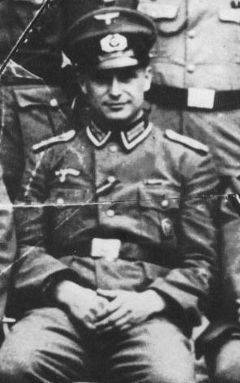 After the war, Klaus Barbie was recruited by American intelligence. Naturally, Barbie could not reside in the US - he was too prominent a figure in the Nazi special services in the past, but he had the opportunity to live freely in Latin America. In 1951 Barbie was evacuated to Bolivia, where he received Bolivian citizenship under the name of Klaus Altmann. During his stay in Bolivia, he acted as a consultant to local intelligence services, according to some information was an adviser to the Bolivian counterintelligence during the operation to defeat the partisan unit Ernesto Che Guevara. In 1980-1981 Barbie served as security advisor to Bolivian President Luis Garcia Mesé, but was still extradited to France in 1983, where he received a life sentence and died in 1991 in prison at the 77 age.
After the war, Klaus Barbie was recruited by American intelligence. Naturally, Barbie could not reside in the US - he was too prominent a figure in the Nazi special services in the past, but he had the opportunity to live freely in Latin America. In 1951 Barbie was evacuated to Bolivia, where he received Bolivian citizenship under the name of Klaus Altmann. During his stay in Bolivia, he acted as a consultant to local intelligence services, according to some information was an adviser to the Bolivian counterintelligence during the operation to defeat the partisan unit Ernesto Che Guevara. In 1980-1981 Barbie served as security advisor to Bolivian President Luis Garcia Mesé, but was still extradited to France in 1983, where he received a life sentence and died in 1991 in prison at the 77 age. Actually, a large number of Nazi war criminals and collaborators from Slavic countries in Eastern Europe took refuge in the United States. Their American intelligence sought to use to combat communist influence in the Slavic countries. Ustashi Minister of the Interior Andriya Artukovich (1899-1988) settled in the United States of America - one of the initiators of the genocide of Jews, Serbs and Gypsies in the territory of the “Independent State of Croatia” during the Second World War. For forty years, he lived safely in California and only in 1986 was arrested and extradited to Yugoslavia, where he was sentenced to death, but because of senile dementia, the sentence was replaced with life imprisonment. Two years later, 88-year-old Artukovich died.
He lived safely in the USA and lived to old age Mykola Lebed (1909-1998) - a Ukrainian collaborationist, a supporter of Stepan Bandera, who was one of the initiators of the Volyn Massacre. After the war, the American special services decided on the possibility of cooperation with them Mykola Lebed. After that, the Ukrainian nationalist was assisted in naturalization in the United States. Lebed collaborated with the CIA, and ended his days in Pittsburgh, USA, dying at the age of 87. Mykola Lebed’s nephew Markian Paslavsky, American entrepreneur and US Army officer in reserve, died in August 2014 near Ilovaisk, fighting in the Donbass pro-Kiev battalion.
In addition to war criminals, many Nazi scientists emigrated to the United States. As part of Operation Paperclip, the American special services created the conditions for a number of leading specialists of the Third Reich to move and naturalize in the United States, among whom were scientists - rocket scientists Werner von Braun, Erich Neubert, Theodor Poppel, August Schulze and many others. 86 German troops were transported to Wright Field. aviation engineers. Until 1990, 1600 German scientists were resettled in the United States. At first, the famous Reinhard Gehlen (1902-1979) operated under the control of American special services. A professional military man, Gehlen was involved in operational development at the Wehrmacht General Staff, including participating in the planning of Operation Barbarossa. On April 1, 1942, he led the army intelligence in the eastern direction, and on May 22, 1945, he surrendered to American troops. With funds from the American special services, Gehlen began the restoration of German intelligence, originally called the "Gehlen Organization" and then renamed the BND - the Federal Intelligence Service of Germany. Gehlen became its first leader and remained in this position until 1968, when he transferred the leadership of intelligence to his successor as head of the army intelligence of Nazi Germany, Lieutenant General Gerhard Wessel. Wessel, by the way, also deserted from besieged by Soviet troops Berlin together with Gehlen and offered the Americans services to create a new special service that the United States could use in confronting the Soviet Union.
Thus, we see that after the end of the Second World War, a huge number of Nazi war criminals rushed into the "New World" - in North and South America they found refuge and more or less quiet life. Latin American states, primarily Paraguay, Argentina, Chile, Brazil, Bolivia, received Nazi criminals, without particularly embarrassment. This was facilitated by the influence of the German diasporas in Latin America, and the anti-communist positions of Latin American military dictators. The United States acted more cautiously, trying to provide shelter to either collaborators from Eastern European countries, especially the Slavs whom the American special services hoped to use against the USSR, or to German scientists and military specialists. But, in addition to the American continent, "rat paths" led from liberated Europe to other regions of the world, including the Middle East. Many Nazis took refuge in Arab countries, but this is another, no less interesting story.
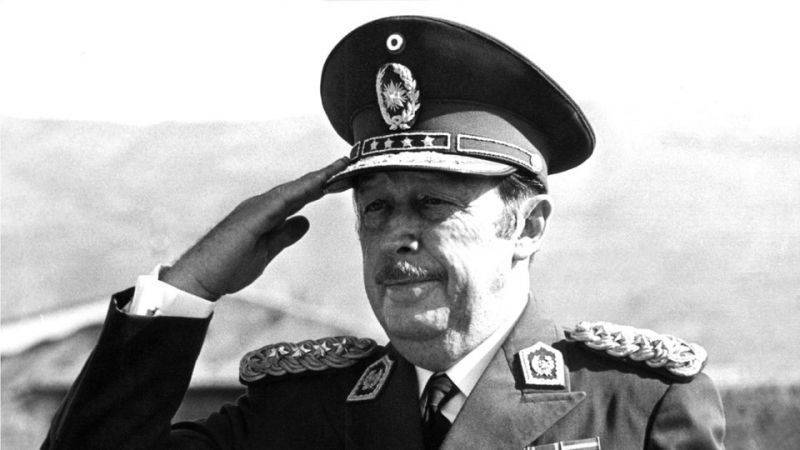
Information